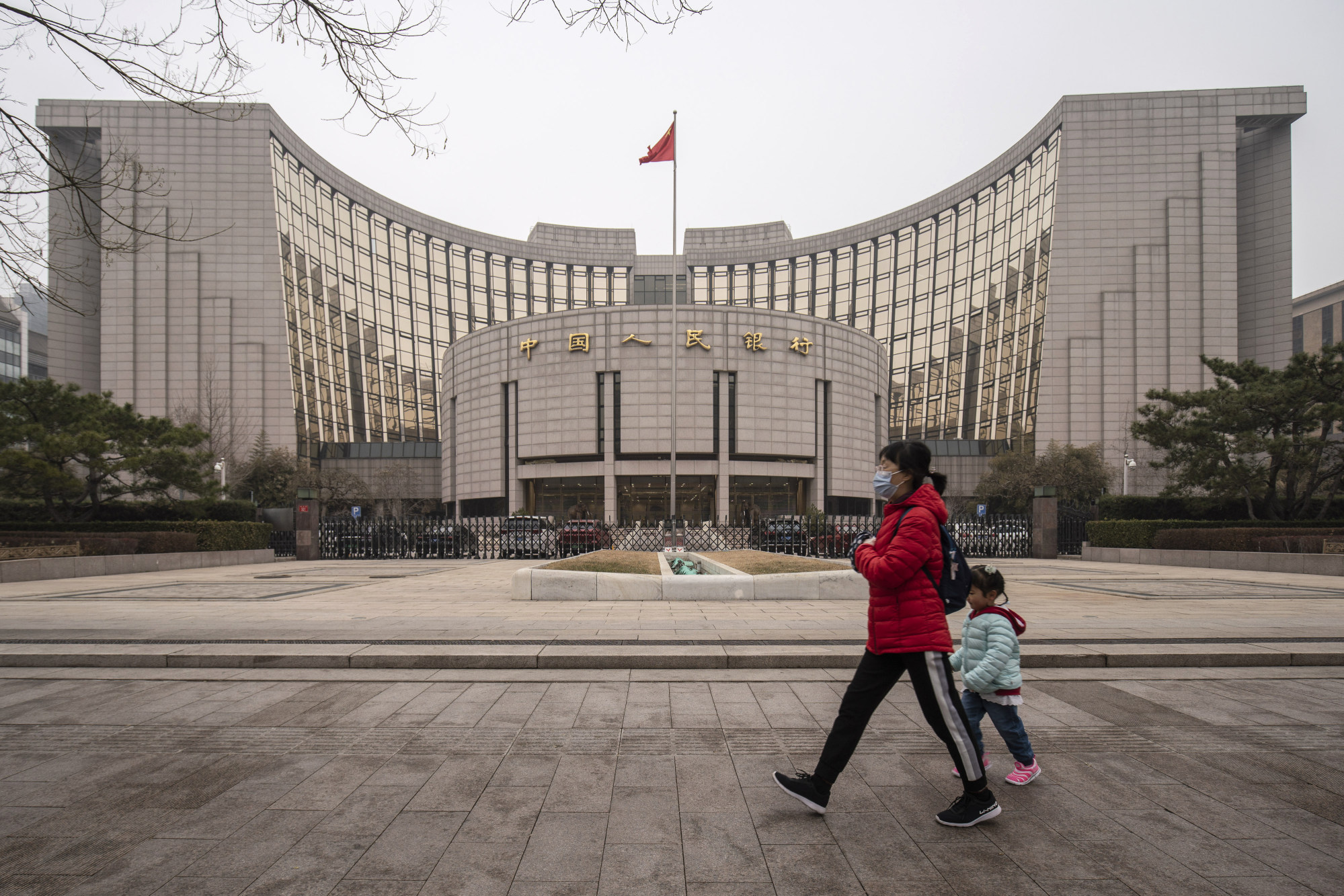 The dollar accounted for 88% in paired foreign exchange currency trading in 2019 and 59% of official foreign exchange holdings
The dollar accounted for 88% in paired foreign exchange currency trading in 2019 and 59% of official foreign exchange holdings 
Why the global financial landscape is undergoing a seismic shift
- Regulators
are struggling to keep up with fintech’s rapid growth and the impact of
big data, even as intense geopolitical rivalries mean accidents could
easily escalate into crises
In 2017, US Treasury Secretary Mnuchin commissioned four major studies on the US financial system that reviewed its efficiency, resilience, innovation and regulation. These surveys highlighted the US dominance in all four areas of banking, capital markets, asset management and financial technology.
To quote the reports proclaimed : “The US banking system is the strongest in the world”... “The US capital markets are the largest, deepest, and most vibrant in the world..(that) include the US$29 trillion (RM119 trillion) equity market, the US$14 trillion (RM57.5 trillion) market for US Treasury securities, the US$8.5 trillion (RM35 trillion) corporate bond market, and US$200 trillion (notional amount or RM820 trillion) derivatives market.”
According to the reports,“Nine of the top 10 largest global asset managers are headquartered in the United States.” In the area of financial technology, “US firms accounted for nearly half of the US$117bil (RM480bil) in cumulative global investments from 2010 to 2017.”
Under-pinning the US financial system’s success is of course the US dollar’s dominant currency pricing role. The dollar accounted for 88% in paired foreign exchange currency trading in 2019 and 59% of official foreign exchange holdings in 2020. It is widely used in trade invoicing in manufacturing but less so in services trade. As a major International Monetary Fund study has shown, this pricing role impacts on emerging market economy (EME) exchange rate policies, as their devaluation would have only limited positive impact on their exports, but amplifies their import contraction.
Furthermore, because EME debt is largely denominated in dollars, any dollar appreciation would have an overall contractionary impact on EME liquidity and growth. This is why US interest rate increases are feared not just by the US Treasury, but also almost all EME economies.
Several factors combined to create the recent seismic shift in the global financial landscape.
First, financial technology has eroded the dominant share of the banking system. The Financial Stability Board (FSB) 2020 report on non-bank financial institutions (NBFI) revealed that as of end-2019, they accounted for 49.5% of global financial assets of $404 trillion, compared with 38.5% for the banks. Indeed, total NBFI lending now exceed bank lending, partly because of tighter bank regulations and higher bank capital and liquidity costs.
`
Second, financial technology has enabled new arrivals in the financial sector comprising not new fintech startups, but also Big Tech platforms that are using Big Data, Artificial Intelligence, apps and their dominance of cloud computing to provide more convenient, speedy and customer-oriented finance for individuals and businesses. This month, a major BIS study on the implications of fintech and digitisation on financial market structure showed how Big Tech has muscled into traditional banking services, especially in payment services, lending and even asset management.
Taking the growth of NBFIs and Big Tech together, the traditional bank regulators and supervisors find that they regulate less and less of the financial system, but central banks are responsible for overall financial stability. Regulating the complex financial eco-system is like trying to tie down a huge elephant by a bunch of specialists each trapped in their own silos. And politically, no one wants to give a super-regulator power to rule them all.
Third, the financial landscape entered new minefields because of intense geopolitical rivalry. If global supply chains are going to be decoupled by different standards, and we arrive at a Splinternet of different technology standards, how should finance respond? As the US applies pressure on Chinese companies and individuals through new sanctions and legislation, financial institutions and companies struggle to deal with shifting goal posts and game changes.

A woman and a child walk past the People’s Bank of China building in Beijing on March 4. China’s central bank, like others around the world, is grappling with how to regulate the fintech industry. Photo: Bloomberg
The Ant Finance and Didi events are more a reflection of regulatory concerns whether large domestic Big Data platforms should be subject to foreign legislation with national security implications. Will India, for example, continue to allow foreign Big Tech to own all their client data?
Fourth, the regulatory trend towards “open financial data” in which banks would open up their client databases to allow new players to access customer accounts and data will provide new products and services. But this means also severe concerns on client privacy and data security. No country has yet figured out how to manage competition fairly in the fintech world when five firms (Amazon, Microsoft, Google, IBM, Oracle) dominate 70% of cloud-related infrastructure services.
Fifth, blockchain technology, cyber-currencies and central bank digital currencies are now increasingly coming on-stream, making possible payments and transactions that rely less on official currencies and also outside the purview of regulation. In short, the official regulators are responsible for system stability, but may not have access to what is really going on in blockchain space. That is an accident waiting to happen.
https://youtu.be/oukokqq1s_o
In addition to more than 600,000 COVID-19 deaths, growth in the US is based on a strong stimulus package of excessive money-printing. China's growth is more solid: Editor-in-Chief Hu Xijin
All these suggest that the global financial system has grown faster, more complex and entangled than any single nation to manage on its own. If the largest financial systems are caught in increasingly acrimonious geopolitical rivalry, what are the risks of financial accidents that can easily escalate to financial crises? In the 2008 global financial crisis, the G20 stood together to execute a whole range of responses. This time round, there is no unity as the US continues to apply financial sanctions against her enemies and rivals, amounting to 4,283 cases as of January 2021, of which 246 and eight respectively were against Chinese and Hong Kong entities.
The bubble in fintech valuation that has fueled rising stock markets and investments in technology is fundamentally driven by central bank loose monetary policy. Central bank assets have grown faster on an average of 8.4% per annum between 2013-2018, than banks (3.8%) or NBFIs (5.9%) to reach 7.5% of global financial assets. Does this mean that financial markets can assume that central banks will continue to underwrite their prosperity?
As inflation rears its head, central banks will have to reverse their loose monetary stance, thus putting the global financial system under stress. The global financial system has structural and regulatory cracks, but they can only be fixed by having some political understanding amongst the big players. Without this, expect a messy outcome.
Andrew Sheng comments on global affairs from an Asian perspective. The views expressed here are his own.
Recommended Video
Related:
Top stories
US$8 trillion and counting | The Star
Condivergence: Termites of the economy | KLSE Screener
Related posts:
Webinar: The rise of ‘Govcoins’ and what’s next for crypto

Break free of US dollar hegemony: What’s next?
Global de-dollarisation fast underway; US Printed More Money in One Month Than in Two Centuries, US$ is fast becoming Banana Currency














